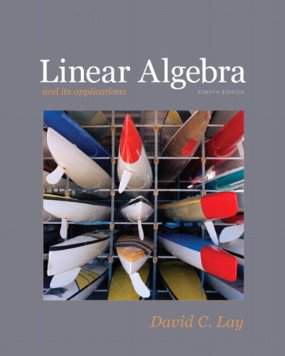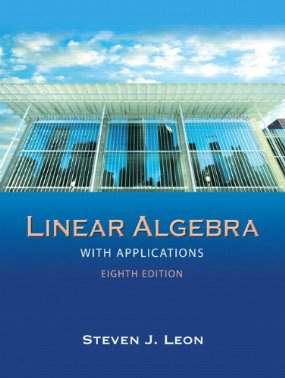Connecting...

This is a quick preview of the lesson. For full access, please Log In or Sign up.
For more information, please see full course syllabus of Linear Algebra
For more information, please see full course syllabus of Linear Algebra
Linear Algebra Solutions of Linear Systems, Part II
Lecture Description
In the previous video we gave you the proof of how every matrix can be reduced to its row echelon form. Now, we’ll show you how this can be a very useful tool by showing you everything that we’ve been talking about. This is one of those topics that is relatively easy to understand and execute, but it takes time to complete and practice to have a good level of comfort. It’s recommended that you find some more of these problems and do them yourself, and to always be patient with these kinds of problems; rushing through a reduction of a matrix can easily mess your addition up and cause you to get the wrong answer.
Bookmark & Share
Embed
Share this knowledge with your friends!
Copy & Paste this embed code into your website’s HTML
Please ensure that your website editor is in text mode when you paste the code.(In Wordpress, the mode button is on the top right corner.)
×
Since this lesson is not free, only the preview will appear on your website.
- - Allow users to view the embedded video in full-size.
Next Lecture
Previous Lecture










































 Answer Engine
Answer Engine




1 answer
Fri Oct 24, 2014 10:16 PM
Post by David Llewellyn on October 16, 2014
In the last example in the Homogeneous System section, does the fact that the variables x & z and y & w are equivalent reduce it to a system with only two unknowns and would there be any way, not necessarily for homogeneous systems, where you could tell that variables (not the value the variables take in a particular solution) are the same?
1 answer
Fri Jun 27, 2014 5:56 PM
Post by Abot Bol on June 26, 2014
Hello Hovasapian
in example 4 of linear systems i got -7 6 and 1 in the last column however your solution has shown 0 0 1 . Am i wrong or is also ok?
1 answer
Tue Aug 27, 2013 9:04 PM
Post by Christian Fischer on August 27, 2013
Hi professor, Thank you for the great videos. At the end of this video you wrote "A homogeneous system always has a trivial solution", So if we have the equation from your example
2x+3y-z=0
x-2y-2z=0
4x+3y-z=0
Does a trivial solution then mean "If I do substitution within the three equations (so isolate x in the first equation and insert in the next) then I will always get X=0, Y=0 and Z=0??
And the only situations where homogeneous equations do have one or infinite solutions is when there are more variables than equations.
Thank you and have a great day.
Christian
1 answer
Mon Jul 23, 2012 6:09 PM
Post by Winnie So on July 22, 2012
I think that x1 should be equal to -2r + 3s + t
4 answers
Fri Oct 11, 2013 8:21 PM
Post by Jason Mannion on October 11, 2011
there is a mistake in this video, in example 1.
the last row has (0,-5,-2,17), but it should be (o,-4,0,12).